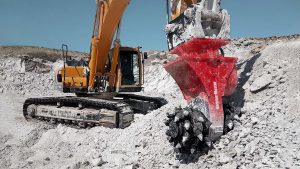Mineral resources have played a fundamental role in the development of human civilizations throughout history. For thousands of years, people have extracted metals, stones, and minerals for tools, weapons, construction, and decorative objects. Tin, copper, gold, and iron became the basis of technological progress: the Bronze Age and Iron Age were largely defined by access to these resources. Over time, extraction methods evolved from primitive techniques to modern, high-tech processes. Today, this industry shapes the global economy, determines energy security, influences industrial production, and drives innovation.
Modern economies rely heavily on stable access to mineral resources. Metals are essential for construction, machinery, and electronics; coal and gas provide energy; rare earth elements are crucial for modern technologies, including renewable energy and electric vehicle batteries. At the same time, mining comes with environmental, social, and economic challenges. Understanding extraction methods, current trends, and historical context is essential: humanity has accumulated extensive experience in resource use, and today the industry stands at the threshold of a new era—sustainable and high-tech resource management.
Historical Extraction and Its Impact on Civilizations
The history of mineral extraction spans thousands of years. During the Neolithic period, humans used stone tools, clay, and minerals to craft tools and decorative items. The Bronze Age (around 3300–1200 BCE) saw the development of copper-tin alloys, enabling the production of stronger tools and weapons. The Iron Age (around 1200 BCE) marked widespread iron use and advances in metallurgy, significantly impacting military technology, construction, and economic development.
In the Middle Ages, the mining of silver, gold, and iron ore shaped economic centers and trade routes. Gold and silver mines contributed to state wealth and facilitated the development of banking systems and international trade. During the colonial era, resource extraction in territories such as Latin America, Africa, and Asia became a crucial factor in the global economy, supplying colonies’ metropoles with raw materials and shaping infrastructure and industrial production.
Thus, humanity has been extracting mineral resources for millennia, gradually improving methods of mining and processing. Today, industry extracts billions of tons of minerals, metals, and energy resources annually, supporting the global economy, technological innovation, and everyday life.
 Modern Extraction Methods and Key Resources
Modern Extraction Methods and Key Resources
Modern extraction methods depend on the type of resource, its depth, and economic feasibility.
-
Open-pit mining is used for coal, iron ore, bauxite, and some non-metallic minerals. It allows for large-scale extraction but disrupts landscapes and ecosystems.
-
Underground mining is used for deep deposits. It is less damaging to the surface but technically complex and poses risks for workers.
-
Oil and gas drilling is carried out both on land and offshore. Horizontal drilling, hydraulic fracturing, and modern platforms improve efficiency but increase environmental and social risks.
Key mineral resources and their modern applications:
| Resource | Applications | Major Producing Countries | Challenges |
|---|---|---|---|
| Coal | Energy production, steel manufacturing | China, India, USA | Pollution, CO₂ emissions |
| Oil | Fuel, chemical industry | Saudi Arabia, USA, Russia | Spills, geopolitical conflicts |
| Natural Gas | Energy, heating, chemical industry | Russia, USA, Qatar | Methane leaks, transportation issues |
| Iron Ore | Steel and metallurgy | Australia, Brazil | Landscape disruption, waste |
| Gold | Jewelry, investment | China, Australia, Russia | Environmental and social impacts |
| Rare Earth Elements | Electronics, batteries, green technologies | China, USA, Australia | Toxic waste, market monopolies |
Currently, mineral extraction underpins the global economy and technological progress, but there is a pressing need for sustainable resource use and environmental protection.
Environmental and Social Challenges
Large-scale mining generates significant environmental issues. Open-pit mining destroys landscapes, vegetation, and ecosystems. Metallurgical processes produce waste and toxic slags. Oil and gas extraction contributes to greenhouse gas emissions and spill risks, while deep-sea operations threaten marine life.
Socially, mining areas often face conflicts with local communities, deteriorating living conditions, and health hazards. For example, cobalt mining in the Democratic Republic of Congo involves harsh labor conditions, child labor, and ecosystem damage.
Geopolitical dependence on rare earth elements and oil creates global economic risks. Many countries aim to diversify raw material sources and develop recycling and reuse technologies to mitigate environmental and political vulnerabilities.
Innovation and Industry Prospects
Modern technologies can reduce negative impacts and increase efficiency:
-
Digital monitoring and automation improve safety and operational control.
-
Renewable energy integration reduces carbon emissions in mining operations.
-
Recycling and secondary use of metals and minerals decrease reliance on primary extraction.
-
Deep-sea and Arctic exploration opens new deposits, especially for rare earth elements essential for electronics and batteries.
For example, Japan actively recycles lithium and cobalt from used batteries, reducing the pressure on primary mines and minimizing environmental damage. In Norway, oil extraction is paired with strict environmental controls and investments in renewable energy, balancing economic benefit and ecological protection.
Conclusion
Examining the history and current state of mineral resource extraction highlights humanity’s accumulated expertise. Mining has evolved from stone tools and bronze alloys to automated operations and 3D-mapped deposits. Today, it supports the global economy, technological development, and everyday life for billions of people.
At the same time, environmental, social, and geopolitical challenges remain critical. Sustainable future management of mineral resources requires combining high-tech extraction, recycling, and responsible resource use. In the end, the success of the industry depends not only on the volume of extraction but also on humanity’s ability to protect nature and ensure equitable distribution of benefits.
Mineral resources will remain essential for human civilization, but their use must follow principles of sustainability, innovation, and social responsibility to secure a balanced and prosperous future.



